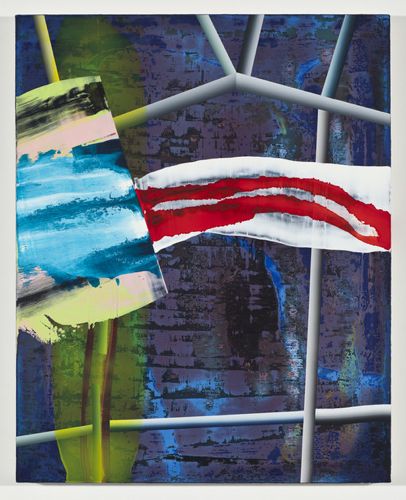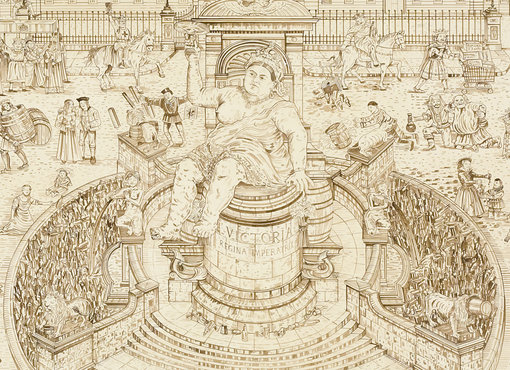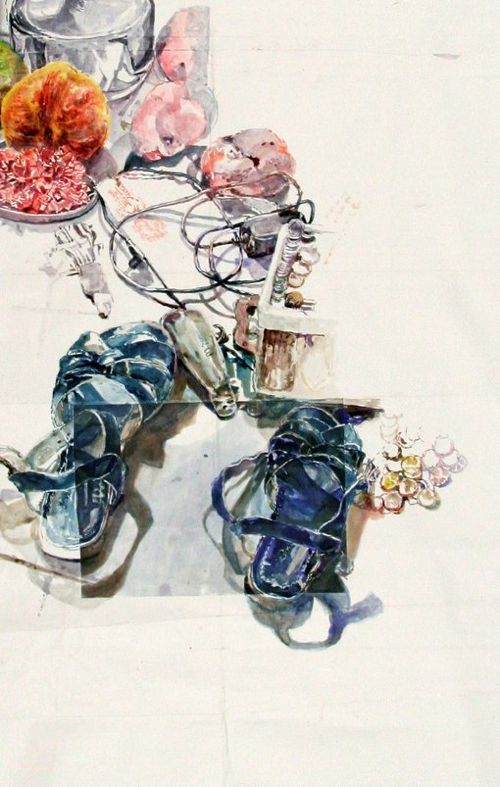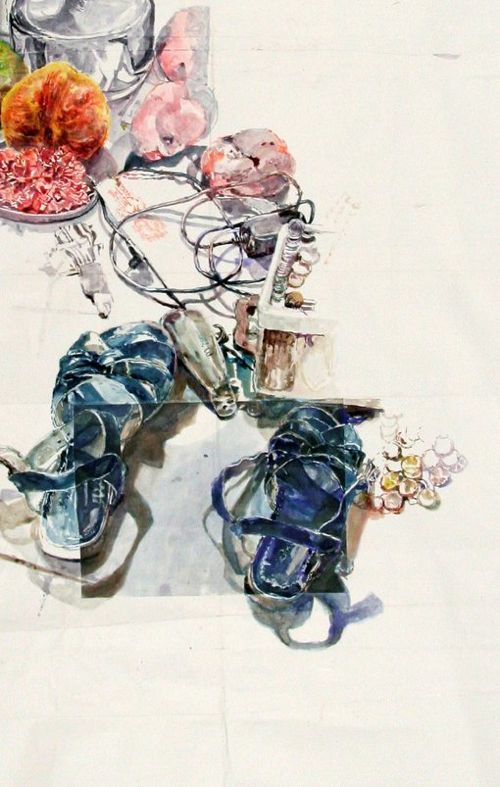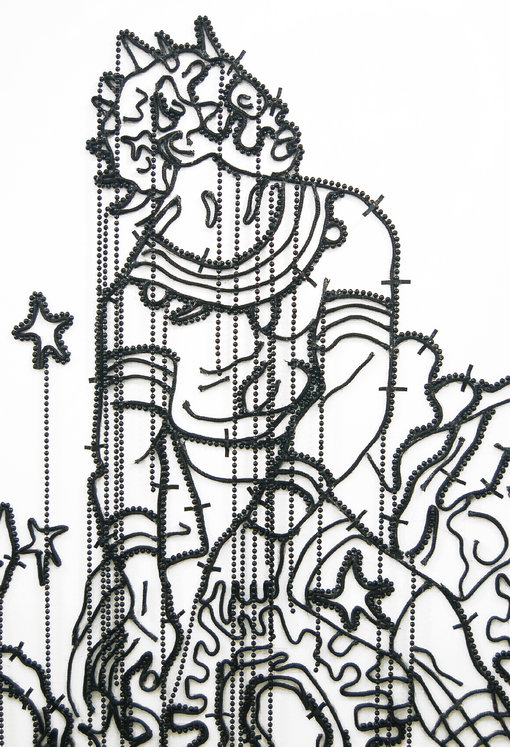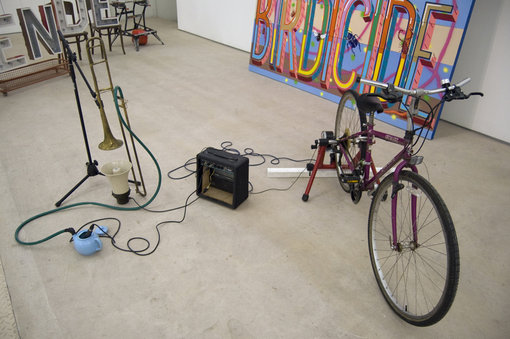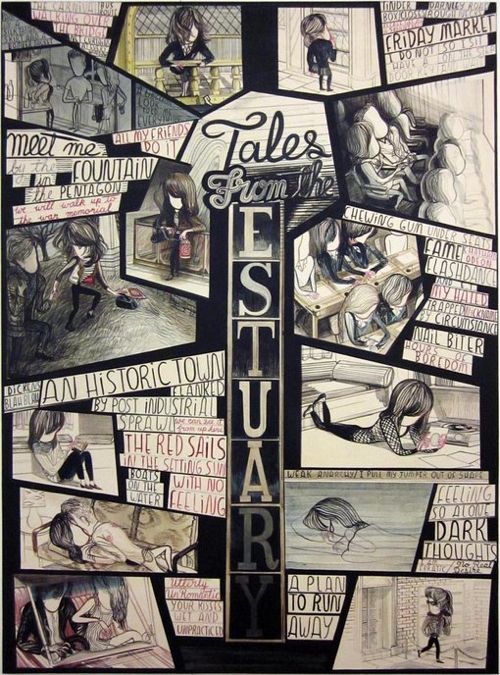
Tag: Hales Gallery
Adam Ross ‘The Eternal Space Between’
ADAM DANT //
Dawn Clements /// Still Life
Dawn Clements // Still Life
Hew Locke | The Nameless
Richard Galpin
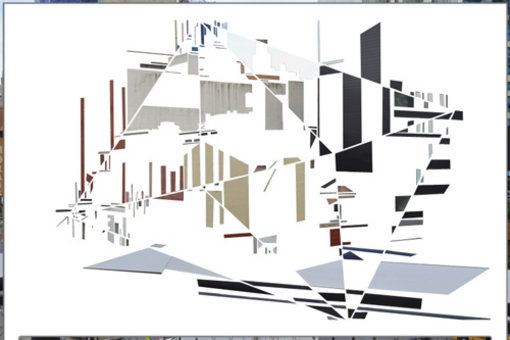
On May 7, 2010, a new artwork by Richard Galpin, entitled Viewing Station, will debut on the High Line, New York City’s elevated park built on a former freight rail trestle on Manhattan’s west side. Using a specially designed and constructed viewing apparatus, this commissioned artwork will offer park visitors an altered perspective of a particular view from the High Line. One of the wonderful experiences the High Line has provided to visitors is a new vista of Manhattan. Similarly, Galpin’s artwork will offer a novel reconsideration of our familiar surroundings.
Galpin is best known for creating altered photographs of cityscapes. His chosen method of manipulation is to cut and remove the top layer of the coloured emulsion from his photographic prints, exposing the paper substrate. By eradicating part of the photograph, the imagery becomes greatly abstracted. Using clean lines and sharp angles, Galpin’s technique produces works with an emphasis on geometric shapes, recalling early twentieth century movements such as Constructivism, Cubism, and Futurism.
Galpin’s Viewing Station will function in a manner similar to his cut photographs, but will use the view from one point on the High Line as its raw material. Park visitors will look through a viewing apparatus, lined up with a metal screen from which geometric shapes have been cut. Precise alignment of these two devices with the buildings behind them will transform what is seen. By blocking some details of the nearby buildings and revealing others, the artwork will make them appear as optically flattened elements in an abstract composition.
Martin Wilner @ Hales Gallery
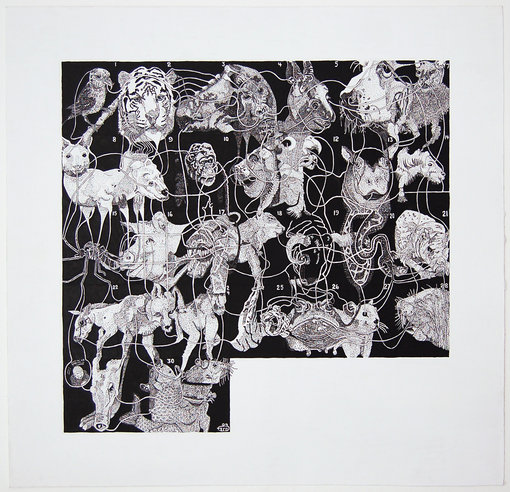
Hales Gallery is pleased to announce the first solo exhibition by New York based artist Martin Wilner. Making history: UK features twelve pen, ink, and graphite drawings, each representing a month in 2009 and are a continuation of Wilner’s ongoing work Making History. Also on view will be recent examples of Wilner’s other ongoing project, Journal of Evidence Weekly.
Wilner’s series Making History uses the convention of the Roman calendar to capture the dimension of time. He deconstructed various elements of newspapers and magazines, selecting images, texts, and maps to create monthly drawings that are the result of a game of cadavre exquis played solitaire. Each total drawing is comprised of all the days of the particular month it was worked on.
For Making History: 2009, Wilner decided to utilise British newspapers for the entire year as source material for his appropriationist draftsmanship, primarily The Guardian, but also The Times, The Daily Telegraph, The Independent and even The Sun. Wilner found himself as an artist, increasingly involved in a reverse migratory process akin to the 19th Century social scientist Alexis de Tocqueville in his renowned study Democracy in America. While Wilner remained physically in the United States, he was able to have the virtual experience of life in the United Kingdom through the prism of its online media. He became increasingly fascinated with British journalists’ lack of concern to conceal their political bias and to find that in a nation of libel tourism, journalists themselves drift regularly into the scandalous, in often-hilarious fashion.
2009 saw the worst international economic recession since the Great Depression of 1929, and a year of worsening climatic devastation. Making History: May 2009 tells the tale of the collapse of the American auto industry, which in our globalized planet, resulted literally in a massive pile-up. Wilner often turns to the animal kingdom, as he does in Making History: March 2009 to metaphorically narrate our relationship to other species, many endangered largely at our own hands. Making History: April 2009 became a rogue’s gallery of mass murderers and mayhem makers and Making History: July 2009 became a kind of revisit to Krafft Ebbing’s Psychophathia Sexualis. And as a departure from Wilner’s self imposed representational parameters of the year, Making History: September 2009 made use of selections from musical scores to create a kind of soundtrack to the cinematic visuals of the rest of the year, a nocturne composed from the detritus of daily events.
Journal of Evidence Weekly stems directly from a feverish dream in which he dreamt that he was about to miss a deadline for a periodical of that same name. As a practicing psychiatrist, Wilner proceeded to self-analyze the dream associatively. His first association was to the acronym of the periodical, which was J-E-W. As a child of Jewish Holocaust survivors, he realised that there was great personal significance to this dreamed reference to responsibility and history. He chose to bring the dream into reality by creating an ongoing series of books of drawings executed entirely while he is in transit, primarily in the subterranean realm of the New York City subway system. The books are mostly in variants of a leporello format, one that structurally conveys the elements of motion over time. Recent volumes have become attempts at capturing the acoustic nature of this world in transit, the snippets of overheard conversation, the plea of the beggar, the muttering of the insane, the announcements of the conductor and the screech of the braking train. This sensuous cacophony is illuminated with strangely fetishistic disembodied elements of figuration, a leg here, a chest there, a grasping hand, and a desperate visage.
Martin Wilner was born in 1959 and lives and works in New York City. His recent one person exhibitions include A Life in Days, Sperone Westwater, New York 2010, More Drawings About History and Evidence, Pierogi, Brooklyn, New York 2008, Journal of Evidence Weekly, The Cartin Collection, Ars Libri, Boston, 2008, Artists Book Program, Bravin Lee Programs, New York 2008.
Recent museum group exhibitions include Reinventing Ritual, Jewish Museum, New York, 1999, Drawn to Detail, De Cordova Museum 2008, Mr. President, University Art Museum, Albany 2007, Off the Shelf, Frances Lehman Loeb Art Center, Vassar College 2006. His work is included in many important public and private collections including the Los Angeles County Museum of Art, the Jewish Museum, the Vassar Art Library, the Cartin Collection and Warner Bros.
Bob and Roberta Smith//This is how we are going to change the world
Bob and Roberta Smith
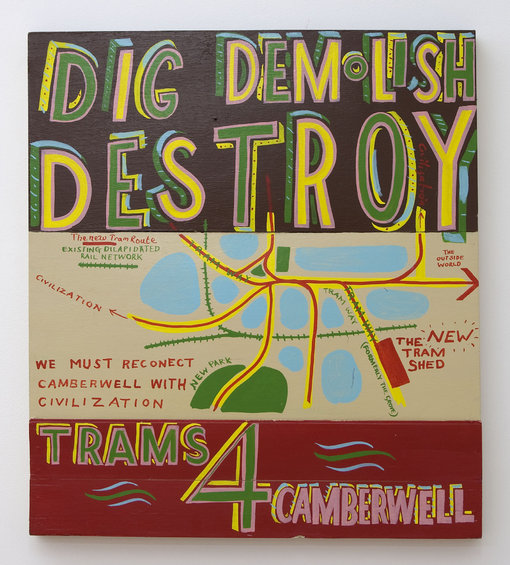
This is a British election year and London based artists Bob and Roberta Smith want to be involved and are keen to have their say!
Bob and Roberta Smith’s third solo exhibition at the gallery, provides them with the perfect platform to get YOU involved. During the course of the show Bob and Roberta Smith are inviting everyone to an event held each Saturday during March at Hales Gallery. They are offering the opportunity to be part of a mass letter writing to politicians on a wide range of subjects as diverse as:
Was it right for the Mayor’s office to cut funding for the anti-racism festival RISE
What is Hilary Benn doing to protect the environment post-Copenhagen?
And asking Ed Vaizey (the Conservative shadow Minister for Culture) why anyone involved in the arts would vote Conservative given their views over the funding of The Arts Council?
Where art movements like the Fluxus or art schools were once the bastions of left-wing thinking and direct political engagement, there now seems to be a mood of indifference. The Smiths are in part nostalgic for the past and on the other hand realistic about what an artist’s involvement with politics can achieve. They have created a show that delves into the current apathy surrounding politics of the ‘middle-ground’ and the elaborate channels that politicians have created to ‘try and get things done’. With their familiar language of signs and placards they attack scepticism in favour of a bright new world where campaigning can change the cultural, natural and creative landscape. With this exhibition, Bob and Roberta Smith are attempting to herald in a new era of political activity.
This is not the first time that the Smiths have used the democratic process and popular politics as subject matter, in fact the artists have returned to it many times. Pictured in their book Make Your Own Damn Art, is a small badge made by a youthful Bob Smith. The year was 1979 and Britain was on the brink of the Thatcher era. The text reads, Tories help the Rich, Labour helps the Rest. It was not meant as an artwork but reflected a common art school sentiment of the time. In an installation entitled The Government at Cell Projects, London (2003) Bob and Roberta Smith played with national disappointment as the first cracks in New Labour’s shiny exterior became visible with a selection of bluntly worded signs poking fun at the then Cabinet. In 2004, as part of a public art project, Bob Smith stood for Mayor of Folkestone, Kent, asking people to Vote Bob Smith for more Art. More recently during Altermodern (curated by Nicolas Bourriaud in 2009) at Tate Britain the Smiths presented a series of signs reflecting the optimism of the first black President of America alongside heaps of street debris.
What all of these projects share is a distrust of a fallible political process alongside a deep-seated belief that against all of the odds, things could get better…….(if only by accident!)
Bob and Roberta Smith live and work in London. Their work is currently being shown as part of Niet Normaal at the Beurs van Berlage, Amsterdam and their solo show This Artist is Deeply Dangerous at Beaconsfield, London runs until 21st Feb 2010. Bob and Roberta Smith are also artists in residence at the New Art Gallery Walsall working with the Epstein archive resulting in a major exhibition The Life of the Mind at the museum in 2011. Bob Smith is currently a Trustee of the Tate. The show also includes three new sculptures that have been made in collaboration with Tim Fidall who recently worked with Bob and Roberta Smith on their 2008 Tate Christmas tree.
